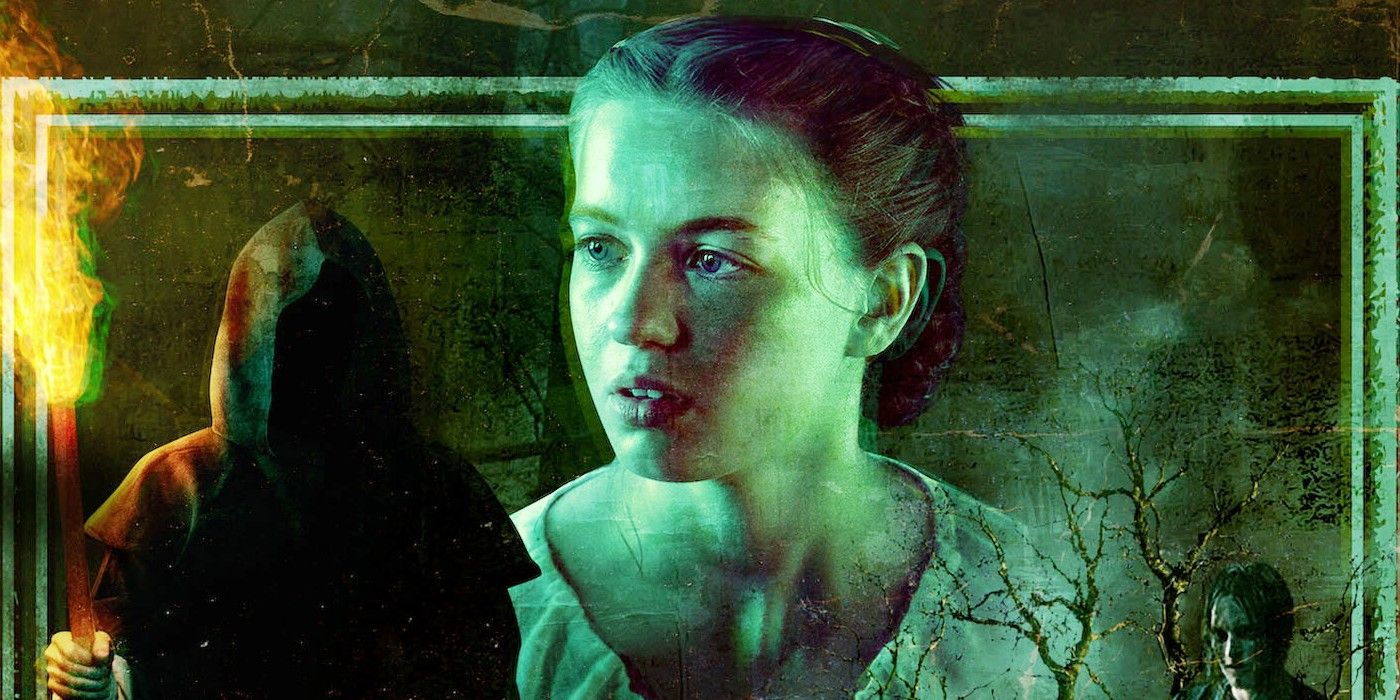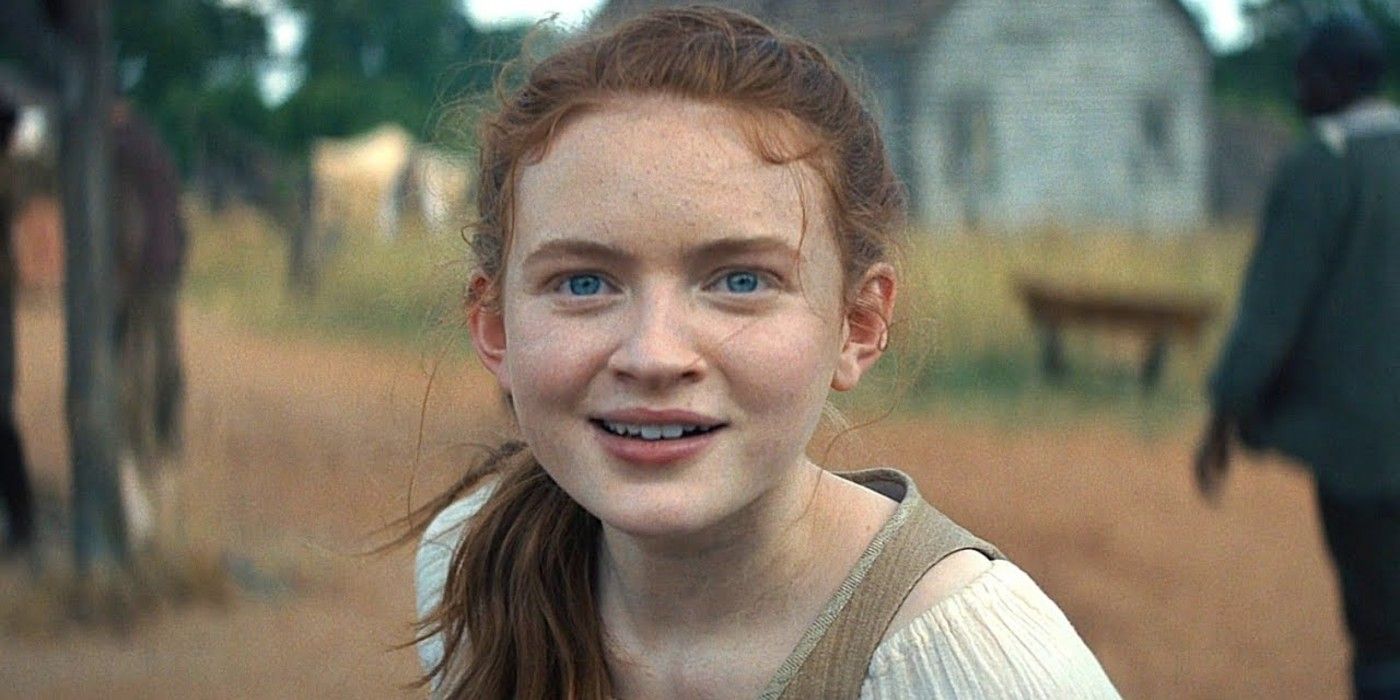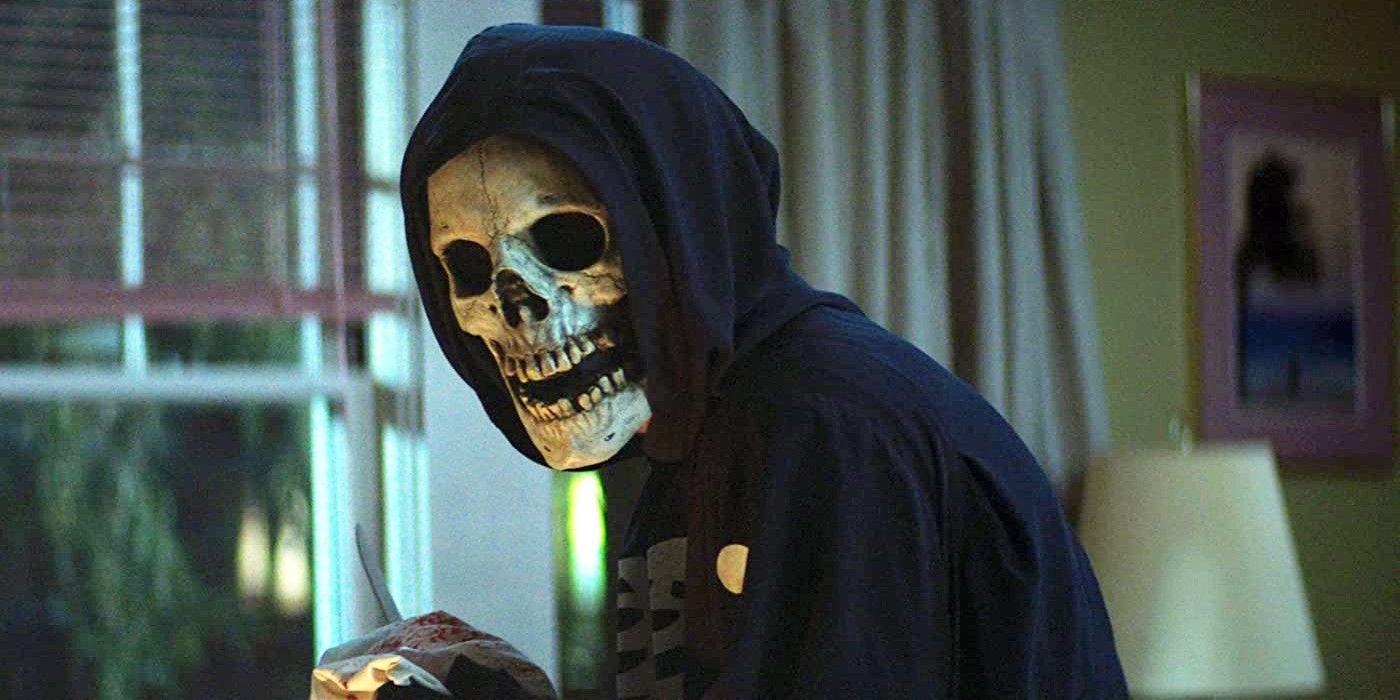For movies based on gleefully trashy horror novels, Netflix's first two Fear Street films have a lot to say about privilege and classism. That remains the case with Fear Street Part 3: 1666, which is once again co-penned and directed by Leigh Janiak and is perhaps the most self-referential chapter in a trilogy that's never been lacking self-awareness. Although it doesn't work as well as a self-contained narrative as the series' previous entries, Part 3: 1666 is a satisfyingly bloody and fitting conclusion to Janiak's loving adaptation of R.L. Stine's Fear Street books.
Whereas Part 1 and Part 2 combine supernatural horrors with classic slasher conventions, Part 3: 1666 channels Robert Eggers' The Witch and similar folk horror films that put a progressive spin on the sub-genre. The first half of the movie follows Deena (Kiana Madeira) as her mind is transported back in time to the 17th-century colony that will one day become the doomed town of Shadyside. As teased at the end of Part 2, Deena gets to see what really happened to Sarah Fier from Sarah's point of view, with the colony's residents being played by cast members from Part 1 and Part 2. Mercifully, the film doesn't bother trying to explain the in-story logic behind this approach and leaves it open to interpretation.
Part 3: 1666 is admittedly a far cry from The Witch when it comes to historical authenticity or immersing audiences in the mindset of its superstitious colonists as they gradually suspect there's a witch among their ranks. All the same, there's something charming about the way the series' young stars fling themselves head-first into their roles and commit to their period accents. Costume designer Amanda Ford, along with the film's hair and makeup artists, seem to have an equal amount of fun turning the actors into unkempt, greasy-haired settlers. What's more, Janiak and her cinematographer Caleb Heymann shoot the movie in desaturated hues, which sets its stylishly gloomy backdrop apart from the boldly colorful and modern settings of the first two Fear Street films.
Casting the actors in double roles also allows Part 3: 1666 to underline the parallels between Sarah's world and Shadyside's class structure. The film portrays its historical backdrop as a patriarchal society where status and gender determine whose voices are listened to and whose are marginalized -- much like economic stature and race dictate the lives of Shadyside's residents over three centuries later. Part 3: 1666 hits even harder on the idea of privilege than Part 1 and Part 2 after introducing Solomon Goode (Ashley Zuckerman), a friend of Sarah's who, like his descendant Nick, never goes beyond showing performative sympathy for those suffering.
Part 3: 1666 similarly circles back to the queer themes from Part 1 by revealing that Sarah was in love with Hannah Miller (Olivia Welch), the daughter of the colony's pastor. Their taboo attraction comes to a head when the pair join their friends for a wild night of tripping out on toxic berries and hooking up -- a wry reminder that teenagers have always acted like teenagers no matter the historical context. This trip, however, sets a dark and disturbing chain of events into motion. While this does prevent the first half of the movie from subverting the "Bury Your Gays" trope the way Part 1 did, the film fleshes out Sarah's interiority in a way that other mainstream titles often fail to do with their queer leads.
As many viewers suspected, there's more to Sarah's curse than meets the eye. Part 3: 1666 confirms this by introducing a twist that, while not a complete shock, is thematically fulfilling and explains what many assumed were plot holes or dangling story threads in the trilogy. Later, the movie jumps forward in time to 1994, delivering an exhilarating climax that doubles down on the needle-drops, vivid neon colors, and gory kills that made Part 1 a blast to watch. What's more, it continues to incorporate playful homages to beloved thrillers, along with non-horror films like Home Alone.
For all the ways the Fear Street trilogy resembles Stranger Things and similar early '80s and '90s horror pastiches, it succeeds in fashioning an identity all its own. It's anyone's guess what the future holds for the Fear Street movie franchise, considering the trilogy was developed by 20th Century Studios then sold to Netflix, as opposed to being one of the streamer's in-house Originals. But, if this is the end of the road for the property, Janiak's films succeed as a terrific standalone tribute to the wonderfully lowbrow writing of a true horror icon.
All three Fear Street movies are now streaming on Netflix.



